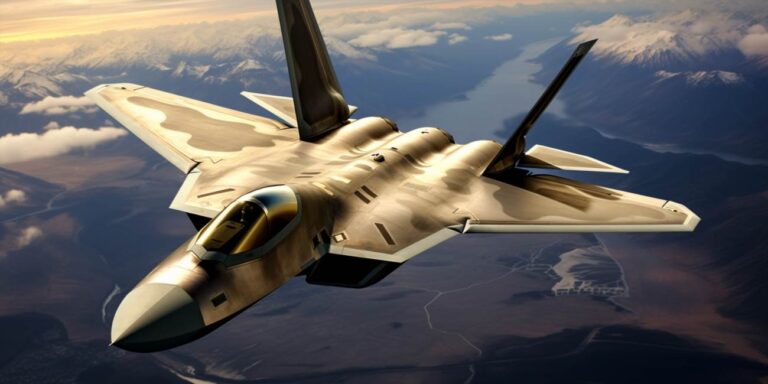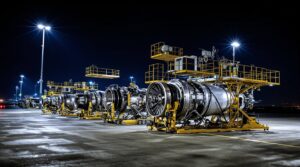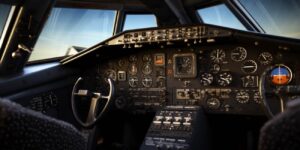Undoubtedly, the United States stands prominently on the global stage with a remarkable fleet of advanced aircraft. Boasting iconic names like the F-22 Raptor and the F-35 Lightning II, the U.S. military’s commitment to innovation and technological prowess is evident. The cutting-edge capabilities of these aircraft, including stealth technology and multi-role functionalities, place the U.S. firmly in the lead.
Not to be overshadowed, Russia has also made substantial strides in the realm of advanced aircraft. The Sukhoi Su-57, Russia’s fifth-generation stealth fighter, showcases the nation’s commitment to staying at the forefront of military aviation. With features like supermaneuverability and advanced avionics, the Su-57 has earned its place among the world’s top-tier fighter jets.
China, emerging as a formidable player, has rapidly developed its aviation capabilities. The Chengdu J-20, China’s answer to fifth-generation fighter jets, is a testament to the nation’s dedication to technological advancement. Equipped with state-of-the-art systems and cutting-edge aerodynamics, the J-20 competes with the best on the global stage.
European nations, collectively through initiatives like the Eurofighter Typhoon and the Dassault Rafale, have pooled resources to create advanced aircraft with multi-national collaboration. These projects highlight the cooperative efforts of nations like Germany, the United Kingdom, and France, combining their expertise to produce aircraft with cutting-edge capabilities.
While these nations dominate the discourse on advanced aircraft, it’s essential to note that technological advancements are fluid. Nations continually invest in research and development, ensuring their aircraft remain at the forefront of innovation. The competition to answer the question of what country has the most advanced aircraft remains fierce, with each participant striving to secure a position of prominence in the dynamic landscape of military aviation.
What country has developed the most technologically advanced fighter aircraft
In the realm of cutting-edge fighter aircraft, the United States stands as the undisputed pioneer, having developed some of the most technologically advanced machines to dominate the skies. The crown jewel of American aviation prowess is the F-22 Raptor, a fifth-generation stealth fighter that redefines air superiority.
The F-22 Raptor, renowned for its unrivaled maneuverability and stealth capabilities, represents the pinnacle of aerospace engineering. Its advanced avionics, including radar-evading technology and sensor fusion, make it nearly invisible to enemy radar systems. This enables the F-22 to operate with a significant advantage, engaging adversaries on its terms.
While the F-22 is a testament to American ingenuity, the F-35 Lightning II further solidifies the U.S. position as a technological powerhouse in fighter aircraft development. As a multi-role stealth fighter, the F-35 integrates state-of-the-art sensors and communication systems, allowing it to excel in air-to-air combat, ground attack, and intelligence, surveillance, and reconnaissance missions.
The F-35’s ability to adapt to various mission profiles is complemented by its interoperability with other allied forces, creating a formidable network of information sharing and collaborative warfare. This ensures a comprehensive and synchronized approach to modern aerial combat.
While the United States leads the pack, other countries have made significant strides in the development of advanced fighter aircraft. Russia’s Sukhoi Su-57 and China’s J-20 are noteworthy contenders in the global arms race for air superiority. The Su-57 incorporates stealth technology and supermaneuverability, challenging the dominance of Western counterparts.
China, on the other hand, has made headlines with the J-20, a fifth-generation fighter designed for long-range interception and air-to-ground strikes. The J-20’s introduction marks a significant leap in China’s quest for technological parity with established aerospace powers.
Despite these advancements, the U.S. defense industry’s commitment to innovation and the consistent funding of cutting-edge projects maintain the country’s lead in technological superiority. The ongoing development of next-generation platforms, such as the Next-Generation Air Dominance (NGAD) program, ensures that the United States remains at the forefront of fighter aircraft technology.
What country manufactures the most sophisticated attack helicopters
When it comes to attack helicopters, the global stage is dominated by a select few nations renowned for their prowess in manufacturing sophisticated aerial war machines. Among these, one nation stands out as the undisputed leader, pushing the boundaries of technology and engineering in the relentless pursuit of creating the most advanced attack helicopters.
In the realm of aerial warfare, the term “sophisticated” transcends mere complexity; it embodies a fusion of cutting-edge technology, stealth capabilities, and unparalleled firepower. At the forefront of this technological arms race is the manufacturing powerhouse known for pushing the envelope – Russia.
Russia’s commitment to producing sophisticated attack helicopters is epitomized by the formidable Mil Mi-28 Havoc and Kamov Ka-52 Alligator. These rotorcraft are the apex predators of the aerial battlefield, equipped with state-of-the-art avionics, advanced sensor suites, and formidable armaments. The Mil Mi-28, in particular, showcases Russia’s dedication to manufacturing sophisticated aerial killing machines.
Another key player in the global landscape of attack helicopter manufacturing is the United States. Renowned for its military-industrial complex, the U.S. is home to iconic helicopters like the Apache AH-64E Guardian. This attack helicopter, with its sophisticated Longbow radar system and precision-guided munitions, underscores the nation’s commitment to maintaining air superiority.
China, rapidly emerging as a military powerhouse, has also made substantial strides in manufacturing technologically sophisticated attack helicopters. The Z-10 and Z-19, developed by the Aviation Industry Corporation of China (AVIC), showcase China’s growing capabilities in producing cutting-edge rotorcraft with advanced avionics and weaponry.
The European landscape contributes significantly to the manufacture of sophisticated attack helicopters, with companies like Airbus and Leonardo leading the charge. The Eurocopter Tiger, a collaborative effort between France and Germany, exemplifies European expertise in crafting sophisticated rotorcraft with multi-role capabilities.
As we delve into the intricacies of attack helicopter manufacturing, it becomes evident that each nation brings its unique blend of technology and innovation to the table. The competition to produce the most sophisticated aerial platforms drives advancements that redefine the capabilities of attack helicopters on a global scale.
Which nation pioneers innovations in stealth bomber technology
When it comes to stealth technology in the realm of bomber aircraft, a select few nations stand as the vanguard of innovation, continually pushing the boundaries of what’s possible in the stealth and aviation domain. Among these, the United States emerges as a formidable force, pioneering innovations that have reshaped the landscape of stealth technology in bombers.
From the birth of the concept of stealth to the operational deployment of state-of-the-art bomber aircraft, the US has consistently been at the forefront. The B-2 Spirit, a remarkable achievement in stealth technology, remains an iconic example. Its unique design and materials enable it to evade radar detection, showcasing the pinnacle of innovation in stealth bomber development.
However, the landscape is evolving. Other nations are actively pursuing their advancements in stealth technology for bombers. China, for instance, has made significant strides with its H-20 stealth bomber project. This endeavor seeks to rival existing capabilities and potentially redefine the benchmarks in stealth technology for bombers.
Not to be overlooked, Russia also has its endeavors in the realm of stealth bomber technology. The PAK DA project represents Russia’s ambition to develop a cutting-edge bomber equipped with stealth capabilities, aimed at asserting its presence in the global innovations in stealth.
| Nation | Key Project |
|---|---|
| United States | B-2 Spirit |
| China | H-20 |
| Russia | PAK DA |
These endeavors showcase a competitive landscape in the evolution of stealth technology for bomber aircraft. Each nation strives to be at the forefront of innovation, introducing advancements that not only bolster their defense capabilities but also redefine the standards for stealth bomber technology on a global scale.






